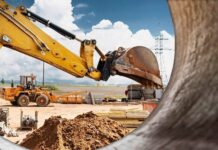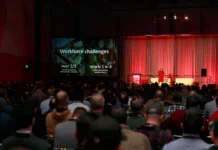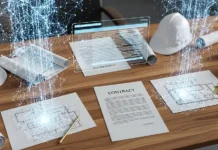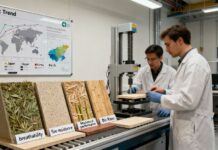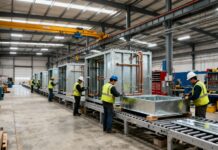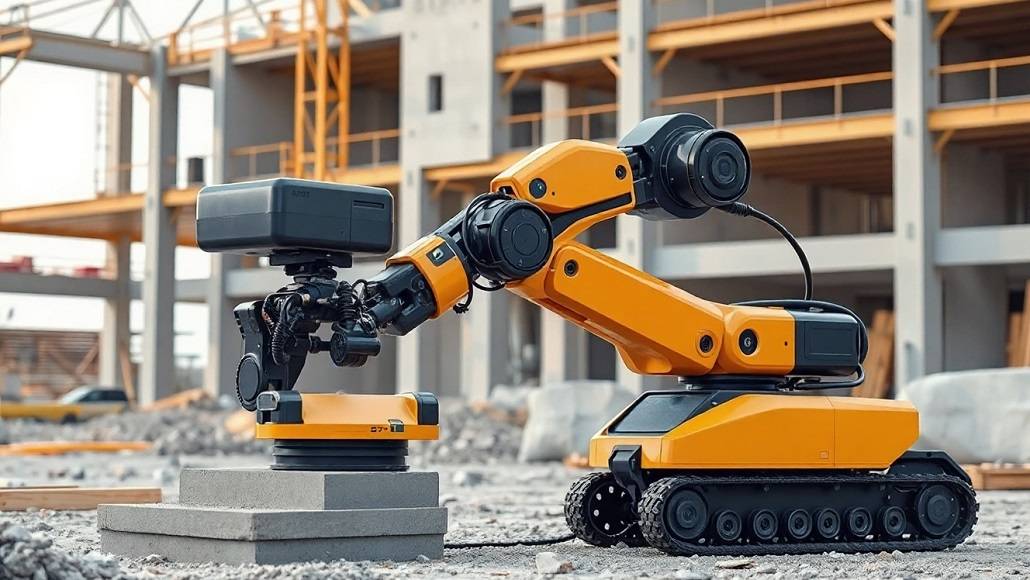COBOD International, in partnership with Technische Universität Braunschweig, has launched the first commercially available multifunctional construction robot. Built on COBOD’s existing BOD2 3D printing platform, the new system incorporates a telescopic vertical extension as well as a robotic arm, which extends its functions beyond wall printing.
The new system facilitates Shotcrete 3D Printing Process (SC3DP), widely applied to the building of intricate concrete structures like tunnels, pools and retaining walls. The robotic arm facilitated with various tools — such as sanding attachments, insulation sprayers, and grippers — turning the printer into a multifunctional robot capable of handling diverse on-site tasks.
Robotic Fabrication of Complex Structures
TU Braunschweig plans to utilize the multifunctional construction robot to manufacture reinforced concrete elements with high surface quality and complex geometries. In this process, reinforcement can be inserted after the concrete is applied or shotcreted around prefabricated reinforcement meshes. The robotic arm’s range and precision enables real-time fabrication of double-curved walls and other non-standard forms.
Additional tools, including sanding tools, can be incorporated into the robotic arm to further improve surface finishing. The robotic arm is of vertical range of 3 meters that can manipulate or modify structures lower than its axis, allowing flexibility for different construction situations.
From Concrete Printing to Modular Construction Tasks
The modular design allows users to swap in tools other than shotcrete application, such as paint sprayers and grippers. This opens the door to automating tasks like mounting prefabricated elements like bricks or aerated concrete blocks — tasks not conventionally connected with 3D printing systems.
This advancement was demonstrated during the opening of the Digital Construction Site at TU Braunschweig. The initiative is set to design for testing digital and sustainable building methods under real-world conditions. The launch event showcases increasing interest from Germany’s construction innovation space for robotics and automation.
Testing in Real Construction Environments
The system will now be used in live building projects to gather data and evaluate its performance under actual site conditions. Researchers will study how automated systems will affect productivity, planning, and sustainability.
The launch is part of a broader research project — The Digital Construction Site: Industry 4.0 for a Sustainable Construction Sector — led by TU Braunschweig’s Institute for Structural Design (ITE) alongside departments in geodesy, materials science and construction engineering. The project seeks to establish new paradigms for cost-efficient, adaptive construction using digital solutions.
Toward Hybrid, Adaptive Building Methods
Project collaborators see the robot as a step toward the hybrid and multi-material construction techniques whereby various processes and materials can be utilized exactly where they’re most effective. The capability of the system to adapt and switch tasks demonstrates an emerging trend toward customizable data-driven construction workflows.
Over the coming months, the field tests will offer insights on how multifunctional robotics can cut waste, improve precision, and streamline project timelines. These key goals that will reduce waste will shift towards smarter and more sustainable construction practices.



